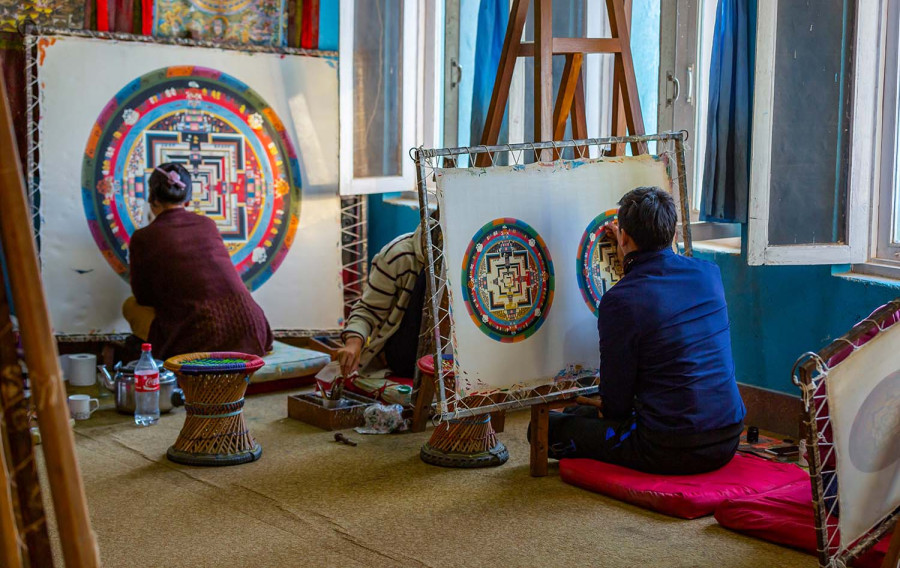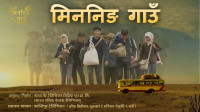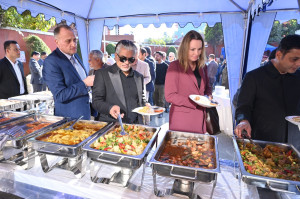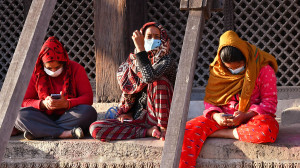Culture & Lifestyle
Culture budget rises, but is that enough?
The government’s renewed focus on heritage and the arts is welcome, but many in the sector say they need sustained support, not just budget hikes.
Reeva Khanal
For any industry to thrive, financial backing makes the difference. Without a proper budget, no project can create a meaningful impact, and no event can effectively reach its intended audience. In a country like Nepal, rich in culture and heritage, campaigns like #VisitNepal2020, which aimed to welcome international guests and promote our tourism and heritage, are significant, yet often fall short without sustained support and infrastructure. With time comes the need for improved infrastructure, allowing people from across the globe to witness the magic of Nepal’s beauty.
As in previous years, the budget allocation for the Ministry of Culture, Tourism, and Civil Aviation has drawn considerable attention, particularly this year’s allocation of Rs13.28 billion. Last year’s budget stood at Rs11.91 billion, accompanied by numerous promises. But the real question remains: Has the government prioritised the conservation and preservation of our cultural heritage—a heritage deeply rooted in our national identity?
With the increased budget allocated to the Ministry this year, the government has pledged several initiatives centred on preserving and promoting culture and the arts. Nepal’s ancient history, rich culture, and archaeological heritage are set to be safeguarded, with plans such as establishing the Panini Knowledge Park in Panena, Arghakhanchi, in honour of Panini Rishi, the pioneer of Sanskrit grammar. Funds have also been designated for digitally archiving historically and archaeologically significant documents.
According to this year’s budget announcement, various programmes will be conducted in collaboration with local communities to preserve and promote the history, culture, language, and civilisation of traditional settlements such as Kirtipur, Bandipur, Bungamati, Thimi, Gorkha, Janakpur, and Matihani.
Santosh Babu Lohani, a board member of the Film Development Board, shares that there is no major satisfaction with the budget allocated to the film industry. “As films are a powerful medium for promoting cultural storytelling, we remain hopeful despite financial constraints. Given the current state of the country, we will prioritise our needs and focus on exploring films and events that have the potential to reach the international stage,” he states. The Board aims to support stories that reflect cultural depth and the country’s rich history, ensuring that Nepali films gain greater recognition globally. “Our priority is to uplift filmmakers and professionals within the industry,” he adds.
Kailash K Shrestha, a contemporary visual artist based in Kathmandu, expresses his disappointment over Nepal’s lack of a dedicated art policy. He shares that he has approached several politicians, presenting ideas to help advance the field. “The art sector needs investment—long-term investment—because results in this field do not come quickly. It takes time and continuous effort,” he states.
Highlighting Nepal’s rich artistic legacy, particularly from the Lichhavi and Malla periods, he emphasises the importance of preserving and showcasing this heritage for future generations. He also urges the government to prioritise creating a comprehensive database of artists and to uplift independent practitioners. “There is immense potential in Nepal’s art scene, but it requires detailed research and proper documentation,” he adds.
Alina Tamrakar, an architect and researcher known for her work in post-earthquake heritage reconstruction in the Kathmandu Valley, is the founder of Baakhan Nyane Waa. This initiative uses storytelling and folktales to reconnect people with oral heritage. She shares that culture is often viewed through the lens of tourism, especially in educational settings, where students are taught the importance of preserving cultural heritage primarily to showcase it to outsiders. “But for us,” she says, “culture is our way of living—and the need to conserve it must come from the grassroots level.”
She notes that with increased power and budget at the local government level, some progress is beginning to emerge, but there is still a long way to go. “Much more needs to be done to launch meaningful projects and initiatives,” she adds.
Sarita Dangol, founder of Classic Gallery and a long-time contributor to Nepal’s art scene, also voices dissatisfaction with how budget allocations often fail to prioritise support for artists. “Whether it’s through providing health facilities or other forms of support that could help artists grow, the attention simply hasn’t been enough,” she says. She stresses that any policies or regulations related to the arts should be implemented in a solid, consistent manner. “Having been in this field for many years, I’ve seen a shift—people’s perspectives towards art and artists are becoming more supportive. But much more still needs to be done at the government level. Individual efforts alone aren’t enough to impact a larger scale,” she adds.
Nepal is a culturally rich and artistically diverse country, and consistent investment, grassroots engagement, and institutional support are crucial. While this year’s budget signals some progress with increased allocations and proposed initiatives, the voices within the cultural and creative sectors reveal a shared sentiment: more needs to be done.
As Nepal looks ahead, it is essential that the voices of those working at the grassroots are heard and their realities understood. Research, documentation, and informed policymaking are key to preserving our cultural heritage while propelling it forward.




 10.12°C Kathmandu
10.12°C Kathmandu













%20(1).jpg&w=300&height=200)

